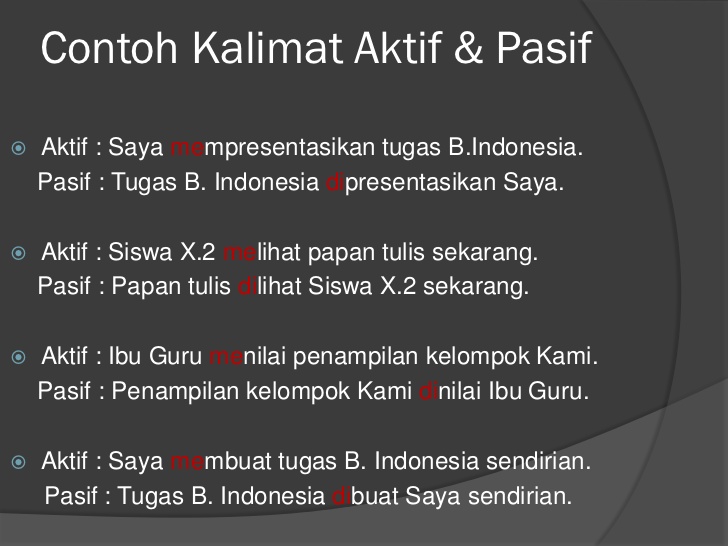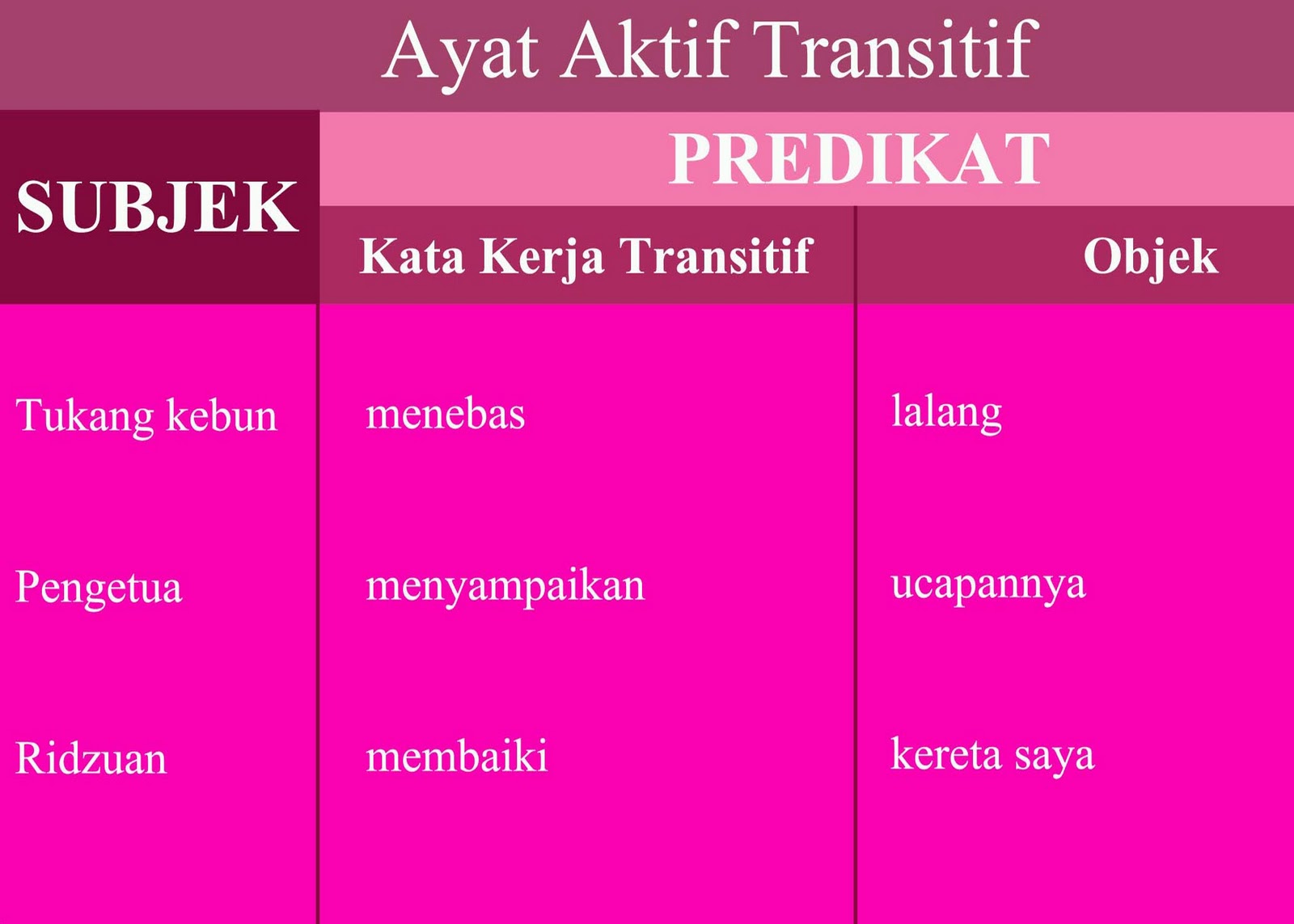
Have you ever stumbled over constructing sentences in Indonesian, unsure of how to use verbs effectively? The key to dynamic and impactful communication lies in understanding the nuances of active verbs, specifically transitive and intransitive verbs (kata kerja aktif transitif dan intransitif). Mastering these verb types is essential for anyone seeking to improve their Indonesian language proficiency.
In Indonesian, like in many languages, verbs are the backbone of a sentence, driving the action and conveying meaning. Active verbs, in particular, depict actions performed by the subject. Within this category, we find two key players: transitive verbs and intransitive verbs. These verb types differ in how they interact with objects in a sentence. This seemingly simple distinction can drastically impact the clarity and precision of your communication.
Transitive verbs (kata kerja aktif transitif) require a direct object to complete their meaning. Think of it like the verb "throwing" – you can't just throw; you need to throw something. Intransitive verbs (kata kerja aktif intransitif), on the other hand, stand alone. They express a complete action without needing a direct object. For example, "sleep" is an intransitive verb; you simply sleep, you don't sleep something.
Grasping the difference between these two verb types is crucial for constructing grammatically correct and meaningful sentences. Imagine trying to build a house without understanding the function of beams and columns. Similarly, attempting to communicate effectively in Indonesian without a solid understanding of transitive and intransitive verbs can lead to confusion and misinterpretations.
This article will delve deeper into the world of transitive and intransitive verbs in Indonesian, exploring their definitions, providing clear examples, outlining best practices, and addressing common challenges. By the end of this exploration, you will have the tools you need to confidently construct powerful and precise sentences in Indonesian.
While the historical development of these grammatical concepts is complex and interwoven with the evolution of the Indonesian language itself, the core distinction between transitive and intransitive verbs remains a fundamental aspect of sentence construction.
For example, "membaca" (to read) is a transitive verb: Saya membaca buku (I read a book). "buku" is the direct object. "Tidur" (to sleep), however, is intransitive: Saya tidur (I sleep). There is no direct object.
One benefit of understanding transitive and intransitive verbs is improved clarity. Using the correct verb type ensures your message is precise and unambiguous. Another benefit is enhanced grammatical accuracy. Properly employing these verbs contributes to well-formed sentences, increasing your credibility as a speaker or writer. Finally, understanding these distinctions enables you to appreciate the nuances of the Indonesian language, leading to a richer and more fulfilling learning experience.
Advantages and Disadvantages of Focusing on Transitive/Intransitive Verbs
| Feature | Advantage | Disadvantage |
|---|---|---|
| Clarity | Precise communication | Requires careful verb selection |
| Grammar | Improved sentence structure | Can be confusing initially |
| Nuance | Deeper understanding of language | Requires dedicated study |
Best practices include practicing regularly, consulting grammar resources, and paying attention to verb usage in authentic Indonesian texts.
Common challenges include distinguishing between similar verbs and correctly identifying the object of a transitive verb. Solutions include studying example sentences and seeking guidance from language tutors or online resources.
FAQ: What is a transitive verb? What is an intransitive verb? What are examples of each? Why are these verb types important? How can I improve my understanding of these verbs? What resources are available to help me learn more? What are common mistakes to avoid? How can I practice using these verbs correctly?
Tips and tricks include creating flashcards with examples, reading Indonesian literature, and engaging in conversations with native speakers.
In conclusion, understanding the distinction between transitive and intransitive verbs (kata kerja aktif transitif dan intransitif) is fundamental to mastering the Indonesian language. This knowledge empowers you to construct clear, grammatically correct, and nuanced sentences. By actively engaging with these concepts, practicing regularly, and seeking out helpful resources, you can significantly enhance your communication skills. The journey to fluency may be challenging, but the rewards of effective communication are immeasurable. Begin exploring the dynamic world of Indonesian verbs today, and unlock the door to a richer and more expressive language experience. Take the time to study and practice, and you will find yourself communicating with greater confidence and precision in no time. The ability to express yourself clearly and accurately is a valuable asset, and mastering these verb types will undoubtedly contribute to your overall language proficiency.
Decoding super bowl viewership how many tune in
Aircon vacuum pump bunnings drama your acs secret weapon
Toyota rav4 4wd warning light decoding the mystery













